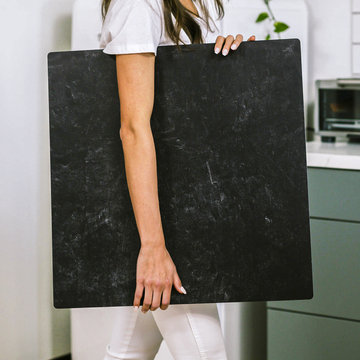Ever wonder why some food photos instantly make you hungry while others fall flat? The secret weapon isn't just lighting or props - it's your backdrop. That simple surface beneath your dish does more heavy lifting than you might realize.
Why Your Backdrop is the Unsung Hero of Food Photography
Most photographers obsess over cameras and lighting gear while treating backdrops as an afterthought. But here's the truth: your backdrop is actively working in three crucial ways:
- Light manipulation: Different surfaces bounce or absorb light in unique ways
- Emotional signaling: Textures and colors trigger subconscious reactions
- Workflow efficiency: The right choice can save hours in post-production
The Light Science You Can't Ignore
Your backdrop isn't just sitting there - it's interacting with every photon that hits it. Here's what happens with different materials:
- Matte surfaces (like slate or concrete): Absorb stray light for softer shadows
- Glossy surfaces (like marble): Create dramatic reflections perfect for liquids
- Textured woods: Naturally diffuse light like a built-in softbox
Pro tip: Try shooting the same dish on different surfaces and watch how the light behavior changes. You'll never view backdrops the same way again.
The Psychology Behind the Texture
Your backdrop sends silent messages to viewers before they even process the food. Consider these subconscious associations:
- Rustic wood = "homemade" and "authentic"
- White marble = "luxury" and "clean"
- Concrete = "modern" and "minimalist"
One coffee brand saw a 22% sales increase simply by switching from marble to weathered wood backdrops - proving texture psychology matters.
Your Backstage Pass to Faster Editing
Here's a secret professionals know: The right backdrop can cut your editing time in half. How?
- Neutral gray surfaces allow one-click white balance
- Slightly textured materials hide imperfections naturally
- Dark backdrops create built-in vignettes
One photographer reported saving 40% in editing time after switching to a matte slate surface. That's hours regained every week!
Putting It All Together
Next time you set up a shoot, ask yourself:
- What emotion do I want to evoke?
- How will this surface handle my lighting?
- Will this choice save me time later?
Your backdrop isn't just a stage - it's a silent creative partner. Choose wisely, and watch your food photography transform.
Want to test this yourself? Try our free backdrop experiment guide to see the differences firsthand.

